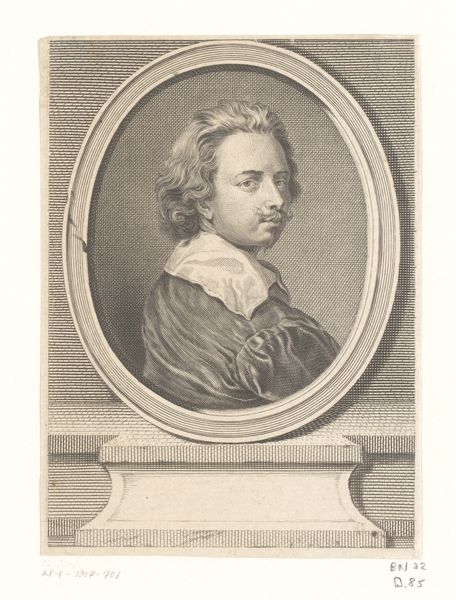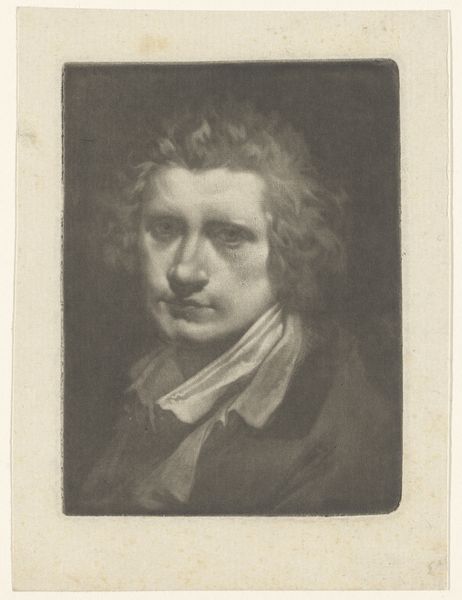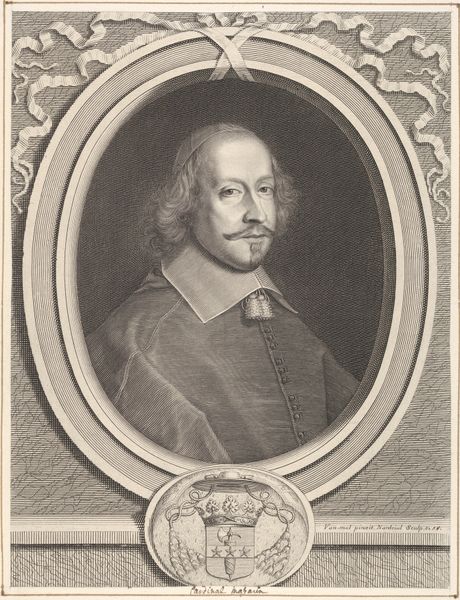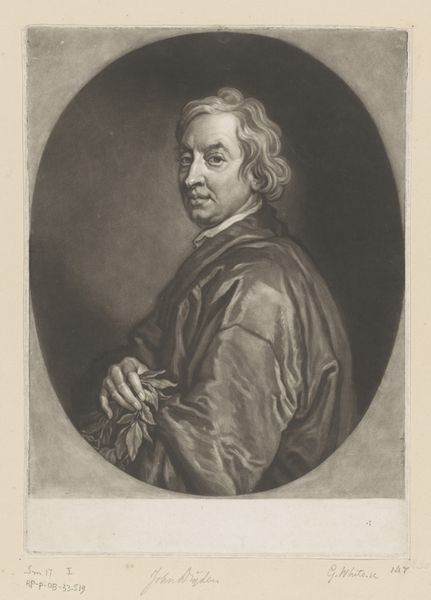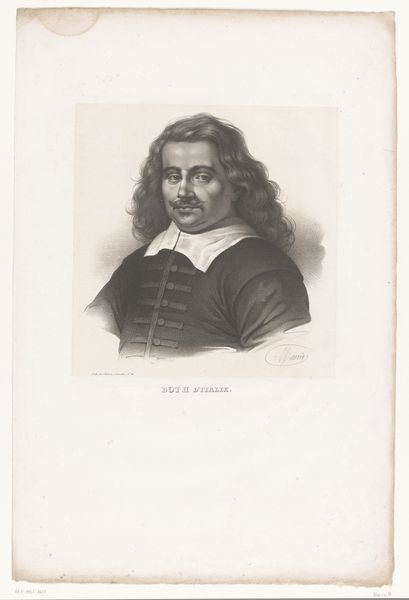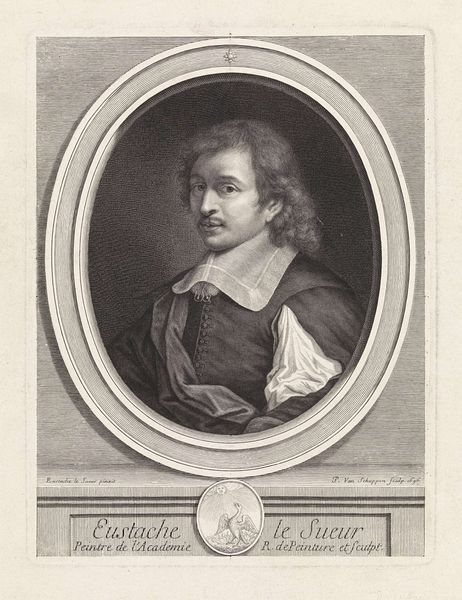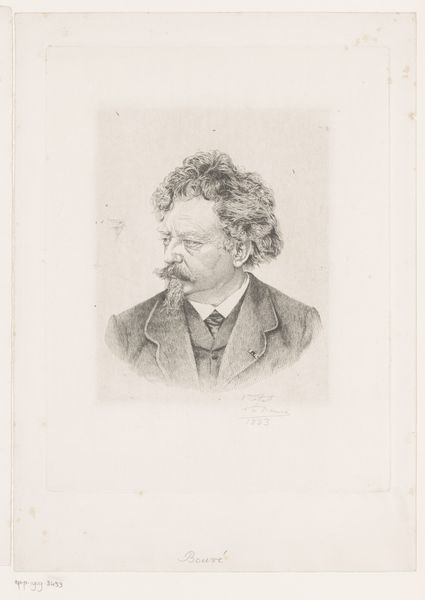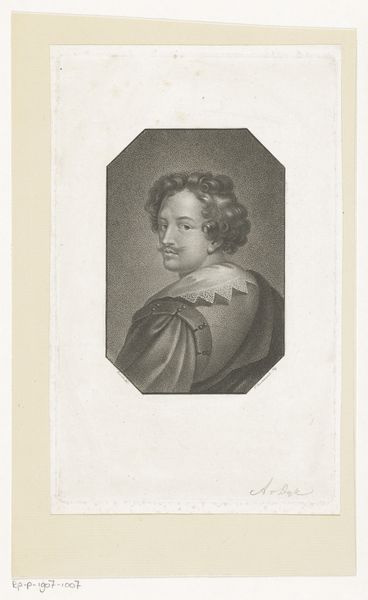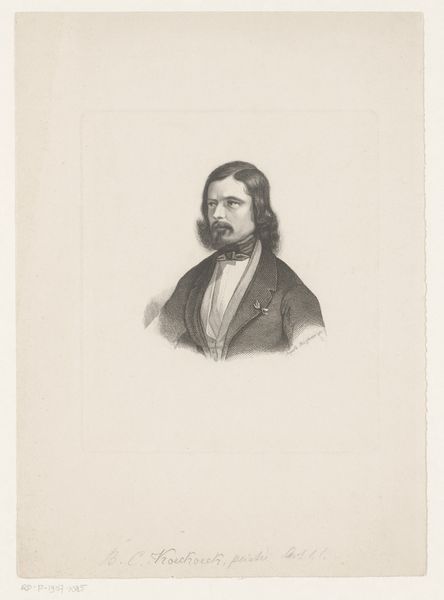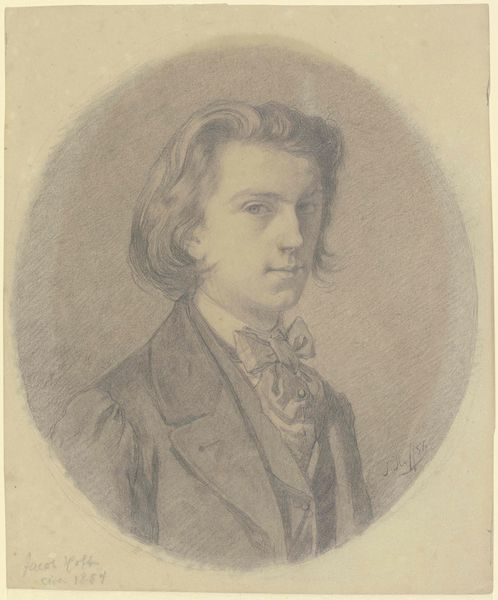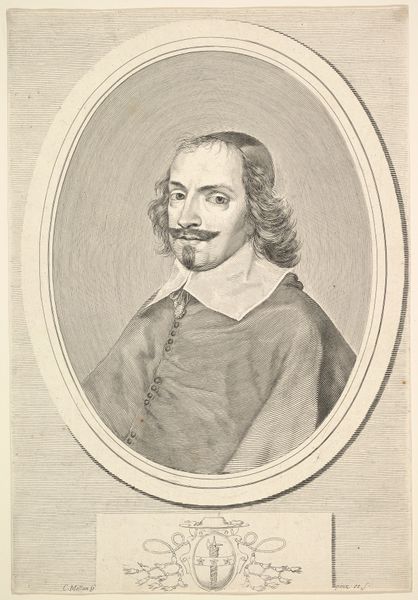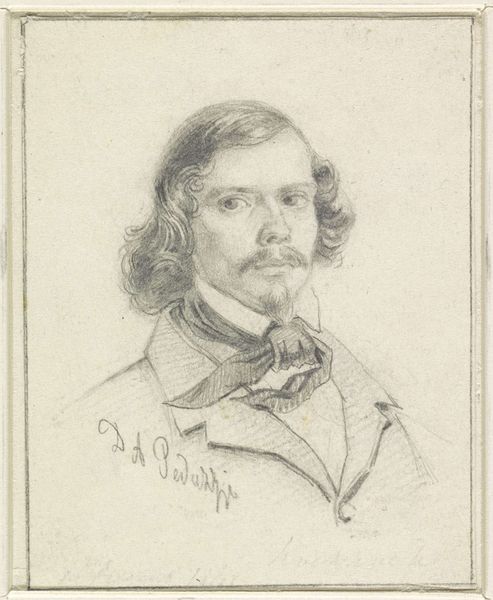
Dimensions: height 217 mm, width 166 mm
Copyright: Rijks Museum: Open Domain
This portrait of Anthony van Dyck was made by Carl August Deis, using a technique called lithography. Lithography involves drawing with a greasy crayon onto a flat stone or metal plate, then using ink to transfer the image to paper. Here, the material qualities of the lithographic process give the artwork a distinctive appearance. The soft, velvety texture and subtle gradations of tone are a direct result of the way the greasy crayon interacts with the stone. The lithographic process was an innovative printing technique in the 19th century, allowing for the relatively quick and inexpensive reproduction of images. Deis would have needed considerable skill to create such a detailed and lifelike portrait. The lithographic process requires a deep understanding of materials and techniques, blurring the lines between art, craft, and industry. This portrait reminds us that all images, even those that appear straightforward, are the product of complex processes and skilled labor.
Comments
No comments
Be the first to comment and join the conversation on the ultimate creative platform.


